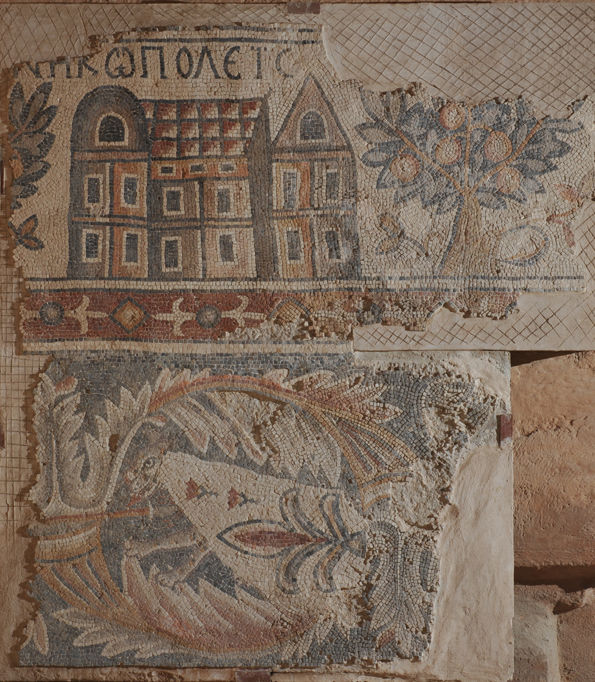As registrar, Aileen Chuk organizes the arrival, installation, and return of loaned works of art for exhibitions at the Museum. I recently spoke with her about the preparations for Byzantium and Islam.
Annie Labatt: How long have you been involved with the Met, and how would you define what you do as a registrar?
Aileen Chuk: I have been a registrar for thirty years, and working at the Met for nineteen years. The work I do has a technical aspect involving objects and conservation, which I am very interested in. I work with legal terminology, paperwork, condition reports, and photography. It's a little bit of everything, which I like. It's just the best job ever!
Annie Labatt: What is your favorite part of being a registrar for shows like Byzantium and Islam?
Aileen Chuk: It was wonderful dealing with the people in Jordan. The couriers were great. I have worked in nine or ten countries and now I have a new country. I have friends in Amman, Jordan. Each time you do one of these shows you create a bond with colleagues from other museums. They get to see how you work, and you see how they work, and it is a real meeting of the minds.
Annie Labatt: How do you address the different materials and media of the objects in exhibitions?
Aileen Chuk: That's the luxury of being a registrar. You get to deal with every type of medium in the exhibition. But you have to take each object on its own. Each object is unique and I have to be responsible for that unique object all the way through. Stone, textile, ivory—each provides its own challenges.
Annie Labatt: What was the most challenging aspect of this particular exhibition?
Aileen Chuk: One of the most important things that I did was get a CITES certificate out of Jordan for the ivories, which no one ever thought we could do. It took lots of emails back and forth and many conversations with the Fish and Wildlife authorities. Fortunately, we were able to get the proper documentation.
Another aspect was the movement of the larger objects like the mosaics from Jordan, which took a lot of help from many sources, including packers from Germany and Jordan. Many of the mosaics from these sites were a lot larger and heavier than we thought, so we had to do a lot of work on the mosaics, work that happened on the actual grounds of the archaeological sites. At one point we had two conservators from the Met in Jordan. They were there prepping the works and getting them ready, even in the middle of two snowstorms.
Mosaic Depicting Nikopolis Set over an Altered Animal, 719–720 and later. Made in Jordan, excavated Church on the Acropolis, Ma'in. Stone tesserae. Madaba Archeological Park, Jordan
Annie Labatt: How do you organize the arrival of objects for a show of this size?
Aileen Chuk: First, the paperwork has to be settled so that it is guaranteed that we will get the object. Next you have to figure out all of the complicated things that have to happen. Then you have to plan everyone's arrival. The trick with this exhibition, as with any large show, is that each case or vitrine has multiple lenders. So you have to plan those, and the timing is very critical. Every moment is precious. Each piece has to be unpacked, condition checked, measured for its mount, stored until the mount is ready, taken out of the cabinet, put on the mount, installed, and then the vitrine has to be closed.
Annie Labatt: What is your favorite moment of the installation process?
Aileen Chuk: When you open up the crate!
I also feel a great sense of accomplishment when an object gets here, safe and sound, and is installed properly. Of course, I can't breathe a sigh of relief until it is all back where it came from.
Annie Labatt: What is your favorite piece in the exhibition?
Aileen Chuk: I am especially impressed by the ancient textiles, and the fact that they have survived this long. It is remarkable to me. Textiles are so fragile, and it was great being able to work with the textile conservators on this show. In particular, the Benaki Museum [Athens] was a big lender of textiles. Their sensitivity to these objects was quite wonderful to watch. They were really familiar with their condition and knew exactly how to help us deal with them in the best manner. And my favorite case is the doll case.
Fragments of a Wall Hanging with Figures in Persian Dress, late 6th–early 7th century. Made in Eastern Mediterranean. Benaki Museum, Athens
Annie Labatt: How did you get interested in being a registrar?
Aileen Chuk: I studied art history and I applied for a job at the Museum of Modern Art in the Architecture and Design Department. When that job was full they suggested a job in the Registrar's Department. I said, "Oh, and what do they do?" And then I was there for twelve years.
One of the reasons I fell in love with being a registrar is because I am passionate about maps. The first thing I would do is look up the country and find out where the object was coming from. Finding out where things come from can change the whole dynamic of the loan and how it is done. The diversity of the programming at the Met is extraordinary, and it challenges me every day. I look forward to those challenges, speaking "Museum" in other cultures, and taking care of the objects.

